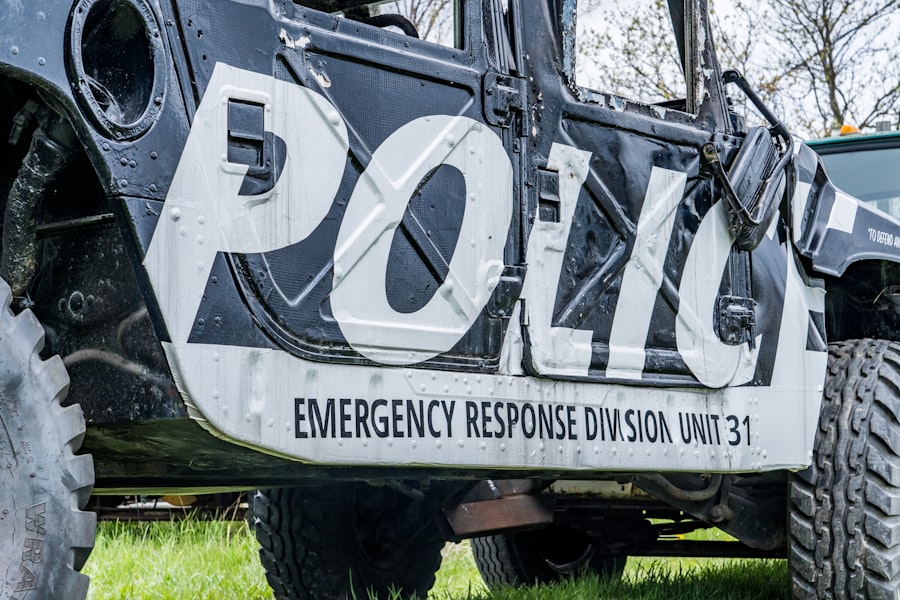You may have heard of the fight, flight, freeze, and fawn responses, often referred to as the four Fs of stress reactions. These instinctual responses are your body’s way of reacting to perceived threats, whether they are physical dangers or emotional challenges. Understanding these responses can be crucial for navigating your daily life, as they influence how you react to stressors and interact with others.
When faced with a threat, your body instinctively chooses one of these responses, which can significantly impact your mental and emotional well-being. In a world filled with uncertainties and challenges, recognizing how you respond to stress can empower you to make more informed choices. The fight response may lead you to confront challenges head-on, while the flight response might prompt you to avoid situations that cause anxiety.
The freeze response can leave you feeling paralyzed in the face of danger, and the fawn response may lead you to prioritize others’ needs over your own. By understanding these mechanisms, you can begin to navigate your emotional landscape more effectively.
Key Takeaways
- The Fight Flight Freeze Fawn Response is a natural survival mechanism that helps humans respond to threats.
- This response has evolved over time to help humans adapt and survive in dangerous situations.
- Understanding the fight response helps in recognizing and managing aggression and anger in oneself and others.
- The flight response involves avoidance and escapism as a way to cope with perceived threats.
- Recognizing and supporting others with the fight flight freeze fawn response can help create a healthier and more understanding environment.
The Evolutionary Basis of the Response
The fight, flight, freeze, and fawn responses have deep evolutionary roots that date back to our ancestors. These reactions were essential for survival in a world filled with predators and threats. When faced with danger, your ancestors had to make quick decisions that could mean the difference between life and death.
The fight response allowed them to defend themselves against attackers, while the flight response enabled them to escape from perilous situations. The freeze response served as a way to avoid detection by predators, and the fawn response helped them navigate social hierarchies and maintain group cohesion. Understanding this evolutionary basis can help you appreciate why these responses are hardwired into your biology.
They are not merely psychological reactions; they are physiological responses that have been honed over millennia. When you encounter stressors today, your body may still react as if it were facing a saber-toothed tiger, even if the threat is more abstract, such as a looming deadline or an interpersonal conflict. This instinctual behavior is a testament to the resilience of human beings and their ability to adapt to their environments.
The Fight Response: Understanding Aggression and Anger

When you experience the fight response, your body prepares for confrontation. This reaction is often characterized by feelings of anger or aggression, which can manifest in various ways. You might find yourself raising your voice during an argument or feeling an overwhelming urge to defend your position fiercely.
This response can be beneficial in certain situations, such as standing up for yourself or advocating for someone else who cannot do so. However, it can also lead to destructive behaviors if not managed properly. Understanding the nuances of the fight response is essential for personal growth.
You may need to reflect on what triggers this reaction in you. Is it a specific person or situation that ignites your anger? By identifying these triggers, you can work on developing healthier coping mechanisms.
Instead of resorting to aggression, consider channeling that energy into assertive communication or problem-solving strategies. This shift can help you express your feelings without damaging relationships or compromising your values.
The Flight Response: Understanding Avoidance and Escapism
| Metrics | Data |
|---|---|
| Number of Avoidance Behaviors | 25 |
| Frequency of Escapist Activities | 3 times per week |
| Impact on Daily Life | High |
| Common Triggers | Stress, Conflict, Responsibility |
The flight response is characterized by avoidance and escapism. When faced with stress or danger, you might feel an overwhelming urge to flee from the situation rather than confront it. This could manifest as procrastination when dealing with responsibilities or withdrawing from social interactions that make you uncomfortable.
While this response may provide temporary relief from anxiety, it often leads to long-term consequences that can exacerbate your stress levels. Recognizing when you are engaging in avoidance behaviors is crucial for personal development. You might find yourself rationalizing why it’s better to stay away from certain situations or people.
However, confronting your fears can lead to growth and resilience. Instead of running away from challenges, consider taking small steps toward facing them head-on. This could involve setting achievable goals or seeking support from friends or professionals who can help guide you through difficult situations.
The Freeze Response: Understanding Immobility and Shutdown
The freeze response is perhaps one of the most perplexing reactions you may experience when faced with overwhelming stress or fear. In this state, you might feel immobilized or unable to act, as if time has come to a standstill. This reaction can be particularly disorienting because it often leaves you feeling trapped in a cycle of inaction.
You may find yourself zoning out during stressful conversations or feeling paralyzed when making decisions. Understanding the freeze response requires compassion for yourself. It’s essential to recognize that this reaction is not a sign of weakness but rather a natural defense mechanism designed to protect you from harm.
To manage this response effectively, consider developing grounding techniques that help bring you back into the present moment. Deep breathing exercises, mindfulness practices, or even physical movement can help break the cycle of immobility and empower you to take action when needed.
The Fawn Response: Understanding People-Pleasing and Compliance

The fawn response is characterized by people-pleasing behaviors and compliance in the face of stress or conflict. When you engage in this response, you may prioritize others’ needs over your own in an attempt to avoid conflict or gain approval. This reaction often stems from a desire for acceptance and safety within social dynamics.
While it can foster harmony in relationships, it can also lead to feelings of resentment and neglect of your own needs. To navigate the fawn response effectively, it’s essential to cultivate self-awareness and assertiveness. You might find yourself saying “yes” when you really want to say “no,” leading to feelings of frustration and burnout.
Learning to set healthy boundaries is crucial for maintaining your well-being while still being supportive of others. Practice expressing your needs openly and honestly; this will not only benefit you but also encourage healthier dynamics in your relationships.
How the Response Manifests in Daily Life
In your daily life, the fight, flight, freeze, and fawn responses can manifest in various ways that impact your interactions and decision-making processes. For instance, during a stressful work meeting, you might find yourself feeling defensive (fight), wanting to leave the room (flight), zoning out (freeze), or overly accommodating others’ opinions (fawn).
You may notice that certain environments trigger specific responses more than others. For example, high-pressure situations might elicit a fight response, while social gatherings could lead to flight or fawn reactions. By paying attention to these patterns, you can begin to identify which responses are most prevalent in your life and work towards developing healthier coping strategies that align with your values and goals.
The Impact of the Response on Mental Health
The fight-flight-freeze-fawn responses can significantly impact your mental health over time. When these reactions become habitual, they can contribute to anxiety disorders, depression, and other mental health challenges. For instance, chronic activation of the fight response may lead to heightened irritability and aggression, while persistent flight behaviors can result in isolation and avoidance of meaningful experiences.
Understanding how these responses affect your mental health is crucial for fostering resilience and well-being. You might find it helpful to engage in self-reflection or seek professional support to explore how these patterns manifest in your life. By addressing these responses proactively, you can work towards developing healthier coping mechanisms that promote emotional balance and overall mental wellness.
Recognizing and Managing the Response in Ourselves
Recognizing when you are experiencing one of the four responses is the first step toward managing them effectively. You may notice physical sensations such as increased heart rate, shallow breathing, or muscle tension when triggered by stressors. By tuning into these bodily signals, you can begin to identify which response is at play and take steps to address it.
Once you’ve recognized your response, consider implementing strategies that align with your needs at that moment. For example, if you’re feeling aggressive (fight), practice deep breathing or take a moment to step back before reacting impulsively. If you’re inclined to avoid (flight), challenge yourself to confront the situation gradually rather than retreating entirely.
Developing self-compassion during this process is vital; remember that everyone experiences these responses at times.
Recognizing and Supporting Others with the Response
Just as it’s important for you to recognize your own responses, being attuned to how others react can enhance your relationships and foster empathy. When someone exhibits signs of aggression (fight), avoidance (flight), immobility (freeze), or people-pleasing (fawn), understanding their behavior through this lens can help you respond more compassionately. Supporting others involves creating a safe space for them to express their feelings without judgment.
If a friend seems overwhelmed and withdraws (flight), reach out gently and let them know you’re there for them without pressure. If someone appears defensive (fight), approach them with empathy rather than confrontation. By recognizing these responses in others and offering support tailored to their needs, you contribute positively to their emotional well-being.
Navigating the Fight Flight Freeze Fawn Response in a Healthy Way
Navigating the fight-flight-freeze-fawn responses is an ongoing journey that requires self-awareness and compassion for both yourself and others. By understanding these instinctual reactions and their impact on your life, you empower yourself to make conscious choices that promote emotional health and resilience. Remember that it’s okay to experience these responses; they are part of being human.
As you continue on this path of self-discovery, consider integrating practices such as mindfulness, journaling, or therapy into your routine. These tools can help you process your experiences and develop healthier coping strategies over time. Ultimately, embracing the complexity of these responses allows you to navigate life’s challenges with greater ease and understanding—both for yourself and those around you.
To gain a deeper understanding of the fight, flight, freeze, and fawn response, it’s beneficial to explore resources that delve into the psychological mechanisms behind these instinctual reactions. One such resource is an article available on Unplugged Psych, which provides insightful perspectives on these responses and their implications for mental health. For more detailed information, you can visit the article by following this link. This article offers a comprehensive overview of how these responses manifest and their relevance in both everyday situations and therapeutic settings.
🧠 Your Trauma Is Rewiring Your Brain: Here’s How to Undo It | A Neuroplasticity & Somatic Guide
FAQs
What is the fight-flight-freeze-fawn response?
The fight-flight-freeze-fawn response is a natural, instinctual reaction to a perceived threat or danger. It is a survival mechanism that prepares the body to either confront the threat, flee from it, freeze in place, or attempt to appease the threat.
What are the physiological effects of the fight-flight-freeze-fawn response?
When the fight-flight-freeze-fawn response is activated, the body releases stress hormones such as adrenaline and cortisol. This leads to increased heart rate, rapid breathing, heightened senses, and a surge of energy to prepare for action.
How does the fight-flight-freeze-fawn response impact behavior?
The fight-flight-freeze-fawn response can lead to a range of behaviors, including aggression and confrontation (fight), avoidance and escape (flight), feeling immobilized or unable to act (freeze), or seeking to please or appease the threat (fawn).
What are some common triggers for the fight-flight-freeze-fawn response?
The fight-flight-freeze-fawn response can be triggered by various situations, including physical danger, emotional threats, conflict, stress, and trauma. It can also be activated by perceived threats to one’s safety, well-being, or sense of control.
How can individuals manage the fight-flight-freeze-fawn response?
Managing the fight-flight-freeze-fawn response involves developing self-awareness, practicing relaxation techniques, seeking support from others, and learning coping strategies to regulate emotions and responses to stress. Therapy and mindfulness practices can also be helpful in managing the response.




